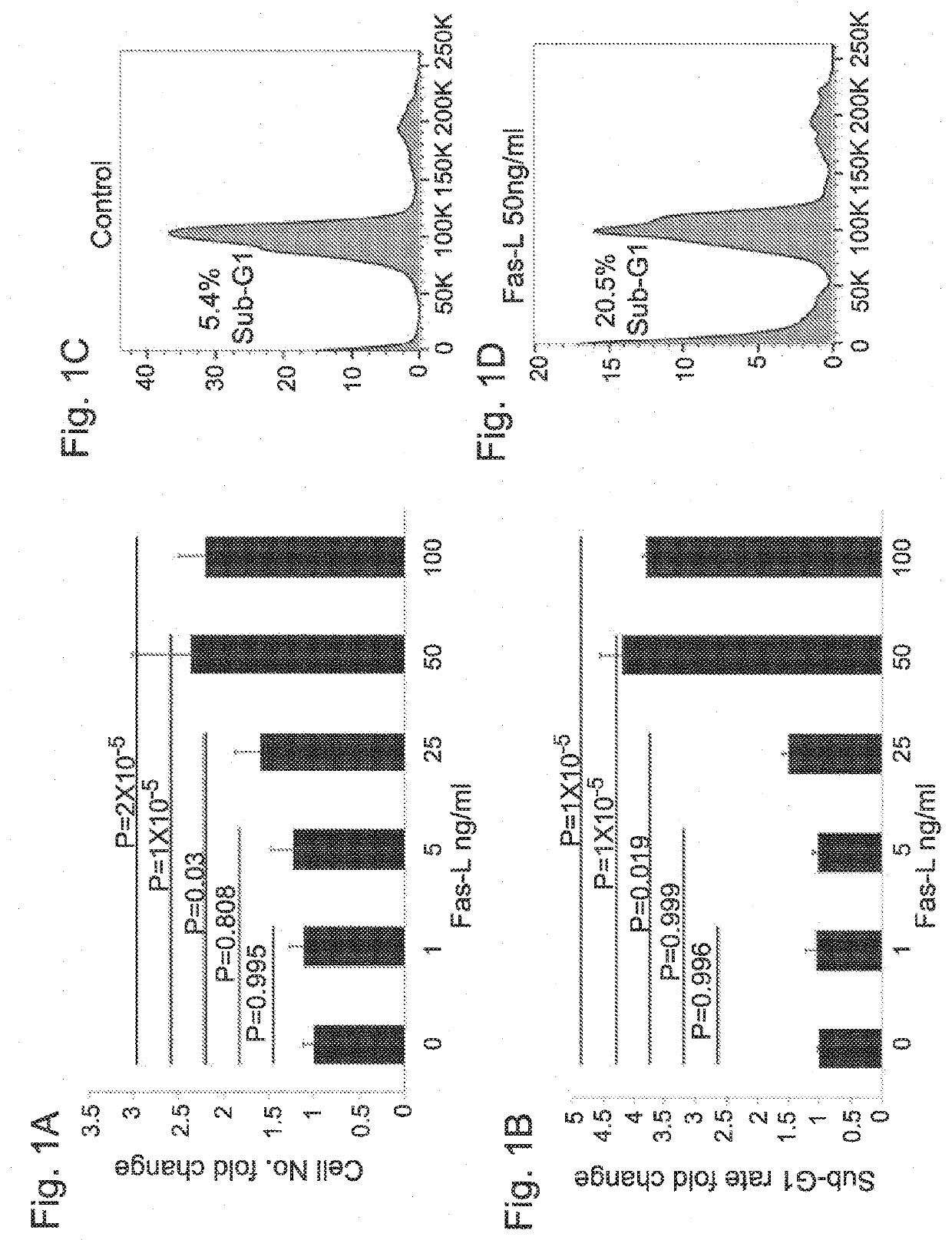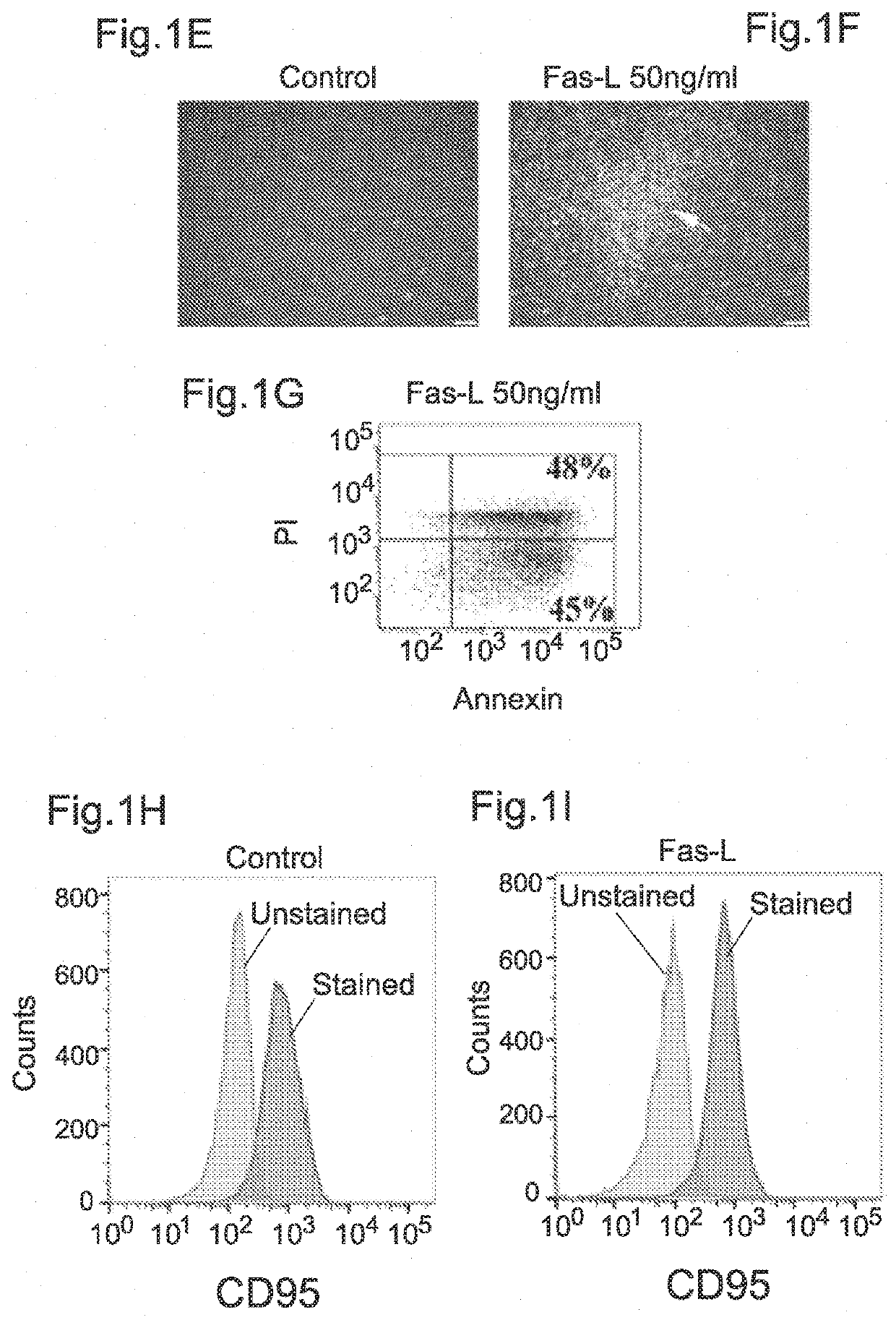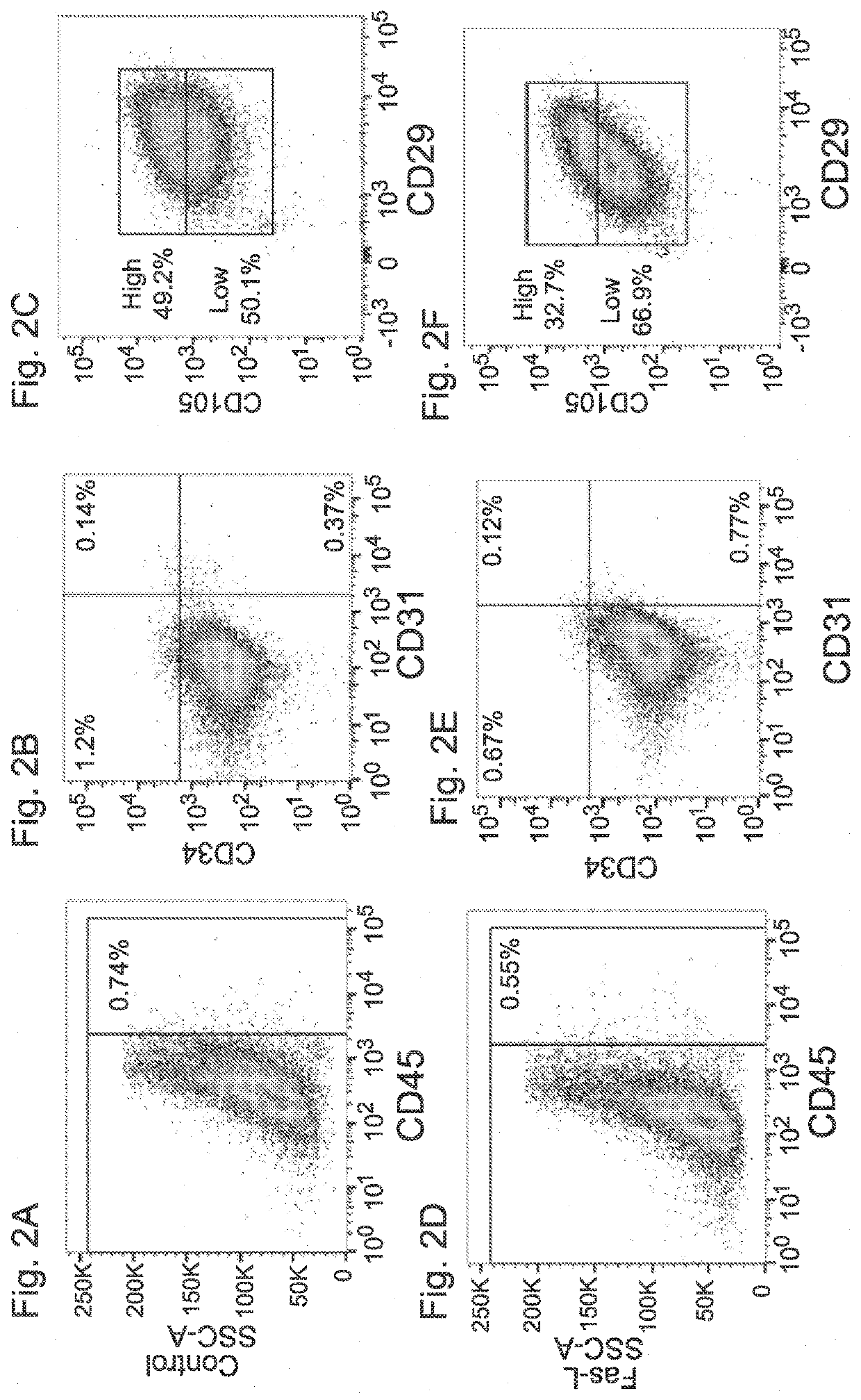Methods for exp anding adipose-derived stem cells
a stem cell and adipose technology, applied in general culture methods, skeletal/connective tissue cells, biochemistry apparatus and processes, etc., can solve the problem that the transition of msc use into routine clinical practice has not been achieved to da
- Summary
- Abstract
- Description
- Claims
- Application Information
AI Technical Summary
Benefits of technology
Problems solved by technology
Method used
Image
Examples
example 1
ous SVF Cell Proliferation and Apoptosis Following Fas-L Treatment
[0178]In order to evaluate the effect of Fas-L treatment on stromal vascular fraction (SVF) cells, SVF cells were obtained from liposuction aspirates, as described below.
[0179]The human SVF cells were cultured for 14 days in normal growth medium as specified below in the presence versus absence of increasing Fas-L concentrations, and the cell yield and apoptosis rate were measured. The experiment was repeated 3 times using cells from 3 independent patients. As shown in FIGS. 1A and 1B, no response to Fas-L concentrations of up to 25 ng / ml was recorded. In contrast, at concentrations of 25 ng / ml and above, SVF cells demonstrated a dose-dependent increase in apoptosis rates (FIG. 1B). Nonetheless, the cell counts were double or more (FIG. 1A). FIG. 1C and FIG. 1D depict apoptosis induced in control SVF cells (without Fas-L treatment) (1C) and in cells treated with 50 ng / ml Fas-L (1D) as calculated by propidium iodide (P...
example 2
atment of SVF Cells Leads to an Increase in the CD105-Low and CD73-High Cell Populations of Passage 0 and 1 ASCs
[0180]Next, the effect of Fas-L treatment on the cells' phenotype was examined. To this end, the surface marker profile of Fas-L-treated (50 ng / ml) SVF cells at passage 0 and 1 was compared to that of untreated controls, using a 7-color flow cytometry panel. The experiment was repeated 2 times using cells from 2 independent patients giving the same trend.
[0181]As expected, at passage 0, fewer than 2% of the untreated cells expressed CD45, CD31 and CD34, close to a 100% expressed MSC cell markers CD29 and CD73 and CD105 (FIGS. 2A-H). A similar expression profile was recorded at passage 1 in untreated cells (FIGS. 2I-L). Despite a significant similarity in the surface marker expression pattern of untreated and Fas-L treated passage 0 cells, a higher percentage of CD105-positive cells expressing low levels of CD105 was noted in Fas-L treated cells as compared to untreated con...
example 3
ated Cultured SVF Cells Display Similar Fat Differentiation and Higher Bone Differentiation Compared to Untreated Cells
[0182]Different ASC subpopulations, characterized by distinct surface marker expression, are known to demonstrate different differentiation potentials. The differentiation of Fas-L-treated versus untreated passage 0 ASCs to fat and bone was compared. Human SVF cells were cultured for 14 days under normal culture conditions or with 50 ng / ml Fas-L. Treated and untreated cells were than passaged to P1 and induced to undergo fat or bone differentiation using designated differentiation media at P1. Differentiation into bone and fat was detected by Alizarin red and Oil red O staining, respectively. Cells which differentiated to fat (FIGS. 3A-C) and bone (FIGS. 3D-F) were then photographed and the stain was extracted and quantified. The experiment was repeated 3 times using cells from 3 independent patients giving the same trend.
[0183]The comparison revealed similar fat di...
PUM
| Property | Measurement | Unit |
|---|---|---|
| concentration | aaaaa | aaaaa |
| concentration | aaaaa | aaaaa |
| concentration | aaaaa | aaaaa |
Abstract
Description
Claims
Application Information
 Login to View More
Login to View More - R&D
- Intellectual Property
- Life Sciences
- Materials
- Tech Scout
- Unparalleled Data Quality
- Higher Quality Content
- 60% Fewer Hallucinations
Browse by: Latest US Patents, China's latest patents, Technical Efficacy Thesaurus, Application Domain, Technology Topic, Popular Technical Reports.
© 2025 PatSnap. All rights reserved.Legal|Privacy policy|Modern Slavery Act Transparency Statement|Sitemap|About US| Contact US: help@patsnap.com



